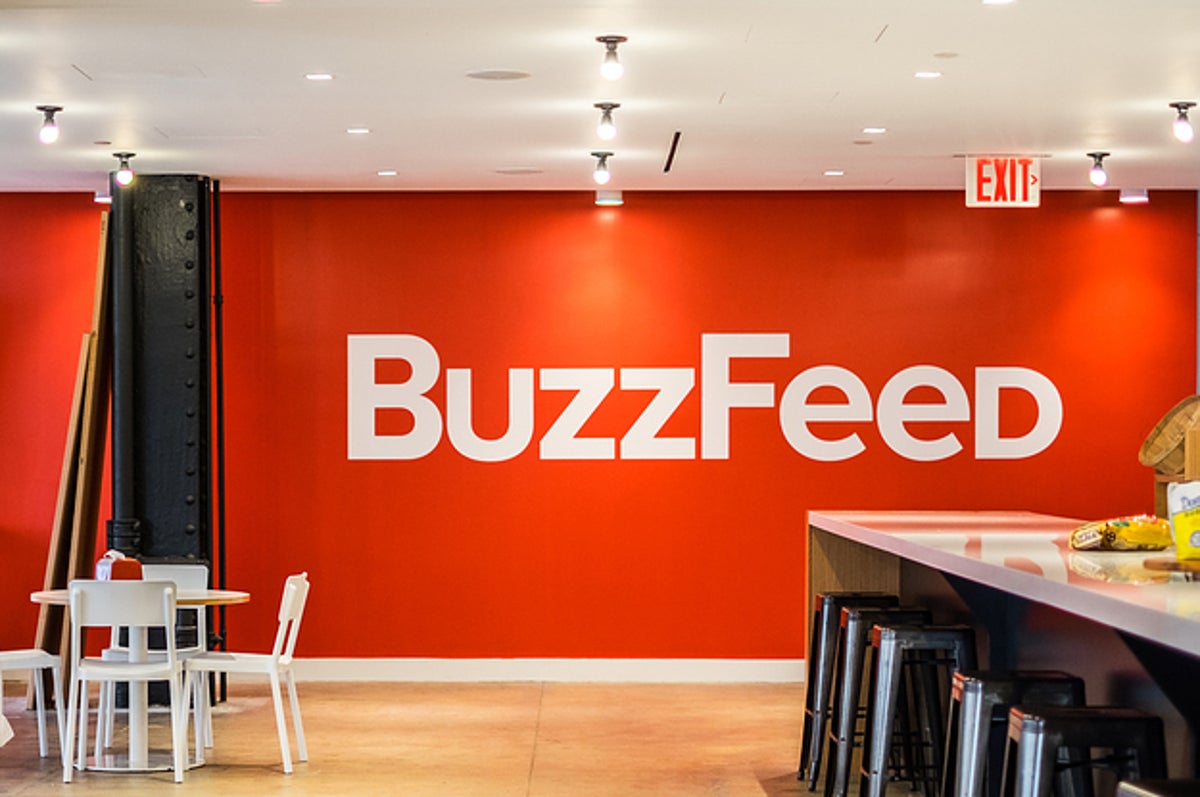
What makes BuzzFeed a media giant? BuzzFeed, founded in 2006 by Jonah Peretti, has grown from a meme-sharing site to a major news organization. Known for its viral content, BuzzFeed attracts millions of visitors monthly, with half accessing via mobile devices. The platform's audience is well-educated, with 30% holding a Bachelor’s degree and 14% a Master’s. BuzzFeed's content strategy blends serious news with entertaining pieces, keeping users engaged for an average of 14 minutes per visit. Its strong social media presence and innovative advertising strategies have set new standards in digital media. BuzzFeed's commitment to quality journalism and cultural sensitivity ensures its continued influence.
Key Takeaways:
- BuzzFeed started as a fun meme-sharing site and evolved into a major news source, reaching millions of people with diverse content and high engagement levels.
- With a strong social media presence and innovative content, BuzzFeed has shaped digital media, influenced culture, and continues to expand its reach globally.
BuzzFeed's Beginnings and Evolution
BuzzFeed has come a long way since its early days. Let's explore its journey from a meme-sharing site to a news powerhouse.
-
BuzzFeed was founded in 2006 by Jonah Peretti, who also co-founded The Huffington Post. Initially, it focused on viral content like memes and humorous articles.
-
The name "BuzzFeed" was chosen for its catchy and memorable nature. "Buzz" signifies something popular and trending.
-
Transition to a news organization began with hiring top journalists, including Lisa Tozzi from The New York Times, marking a significant shift in its content strategy.
Audience and Demographics
Understanding who reads BuzzFeed helps explain its content choices and strategies.
-
In 2013, BuzzFeed had a U.S. digital population of 23.7 million, ranking it as the No. 106 Web property according to ComScore.
-
Mobile usage is significant, with BuzzFeed claiming that 50% of its traffic comes from mobile devices, despite ComScore reporting 35%.
-
Visitors view an average of 12 pages per person each month, showing high engagement levels.
-
Social media drives roughly half of BuzzFeed's monthly unique visitors, highlighting its strong presence on platforms like Facebook, Twitter, and Instagram.
-
Three out of every 10 visitors hold a Bachelor’s degree, and 14 percent hold a Master’s degree, indicating a well-educated audience.
-
The majority of visitors are between 18 and 34 years old, with 56 percent in this age group. The 55 and over demographic makes up 15 percent.
-
A significant majority of visitors are women, with 56 percent identifying as female.
-
Thirty-nine percent of BuzzFeed’s U.S. audience has a household income exceeding $100,000, indicating a substantial middle to upper-class demographic.
Content and Engagement
BuzzFeed's content strategy is a mix of serious news and entertaining pieces, catering to a diverse audience.
-
BuzzFeed’s partner network includes over 200 sites, reaching roughly 355 million users, expanding its reach and influence.
-
Advertising revenue is significant, with click-through rates for its ads being 1 to 2 percent, which is 10 to 20 times the average banner click-through rate.
-
Running advertising content can cost brands around $100,000, typically getting them four or five posts, seen as a strategic move to reach a highly engaged audience.
-
BuzzFeed combines serious news articles with lighter, more entertaining pieces, maintaining a broad appeal.
-
Serious news coverage includes significant global events, such as the need for U.S. and U.N. intervention in Syria.
-
Viral content remains a strong presence, with memes, animal posts, and humorous articles continuing to attract a large following.
-
Visitors averaged 14 minutes per person using the site in March 2013, indicating high engagement with the content.
Content Creation and Strategy
BuzzFeed's approach to content creation involves a collaborative and innovative process.
-
Educational background of the audience is diverse, with three out of every 10 visitors holding a Bachelor’s degree and 14 percent holding a Master’s degree.
-
Age-specific content is tailored to resonate with both younger and older demographics, given the age distribution of its audience.
-
Gender-specific content addresses issues relevant to women, including articles on lifestyle, health, and personal development.
-
Income-based content is popular among the high-income audience, with articles on finance, luxury lifestyle, and high-end products.
-
Partnerships and collaborations with other media outlets and brands help expand BuzzFeed’s reach and create new content opportunities.
-
Advertising strategies are designed to maximize engagement, using various formats like videos, articles, and interactive content.
-
Revenue models include sponsored content and affiliate marketing, diversifying BuzzFeed’s income streams.
-
User experience is engaging and interactive, with tools like quizzes, polls, and interactive articles keeping visitors on the site longer.
Social Media and Technology
BuzzFeed leverages social media and technology to enhance its content and reach.
-
Strong social media presence is crucial for BuzzFeed’s success, promoting content and engaging with the audience in real-time.
-
Content creation involves a team of writers, editors, and producers, ensuring high-quality, engaging articles and videos.
-
Robust fact-checking processes ensure accuracy, addressing past criticisms of lacking fact-checking.
-
Investigative journalism has led to major revelations and changes in policy, with several high-profile investigations published.
-
BuzzFeed’s influence on journalism is undeniable, raising the bar for digital media outlets with high-quality, engaging content.
-
Challenges include navigating the ever-changing digital landscape, such as algorithm changes on social media platforms and increased competition.
-
Future plans involve expanding serious news coverage while maintaining engaging, interactive content.
Cultural Impact and Innovation
BuzzFeed has significantly impacted digital media and continues to innovate.
-
BuzzFeed popularized the concept of "listicles", making them a staple of digital media.
-
Influence on social media is evident, with the use of memes, GIFs, and viral content shaping how people consume and share information online.
-
Educational value is provided through articles and videos on a wide range of topics, from science and history to lifestyle and culture.
-
Community engagement is fostered through comments, polls, and interactive features, allowing users to participate in discussions and share opinions.
-
User-generated content is encouraged, with features like quizzes and polls allowing users to create and share their own content.
-
Collaborations with brands create sponsored content that is engaging and relevant, providing valuable marketing opportunities.
-
Revenue sharing models allow creators to earn money based on content performance, incentivizing high-quality content production.
-
Advanced analytics track content performance, helping refine content strategy and improve user engagement.
-
User feedback is actively sought to improve services, using surveys, comments, and other forms of feedback.
-
Innovative use of technology enhances the user experience, with various tools and features making content creation more efficient.
-
Global reach is significant, with content translated into multiple languages and a strong following in countries like the UK, Australia, and India.
-
Cultural sensitivity ensures content is respectful and inclusive, catering to diverse audiences from different cultural backgrounds.
-
High ethical standards in reporting maintain audience trust, with well-researched and fact-checked articles.
-
Investigative journalism awards recognize BuzzFeed’s commitment to in-depth reporting, earning it recognition within the journalism community.
-
At the forefront of digital media trends, BuzzFeed continuously innovates and adapts to new technologies and formats.
-
Innovative advertising approach impacts the industry, with high click-through rates and engagement metrics setting new standards.
-
Future prospects are bright, with continued expansion and influence both domestically and internationally.
BuzzFeed's Impact and Future
BuzzFeed has come a long way since its start in 2006. From sharing memes to becoming a serious news outlet, it has managed to stay relevant and influential. With a strong presence on social media, BuzzFeed reaches millions, especially younger audiences. Its mix of fun and serious content keeps people engaged, while its innovative advertising strategies attract big brands. Despite challenges, like changing algorithms and competition, BuzzFeed continues to adapt and grow. Its commitment to quality journalism and engaging content sets it apart in the digital media landscape. As it expands globally and embraces new technologies, BuzzFeed is poised to remain a key player in the industry. Whether you're looking for a laugh or serious news, BuzzFeed has something for everyone. Its future looks bright, and it will be exciting to see how it continues to evolve.
Frequently Asked Questions
Was this page helpful?
Our commitment to delivering trustworthy and engaging content is at the heart of what we do. Each fact on our site is contributed by real users like you, bringing a wealth of diverse insights and information. To ensure the highest standards of accuracy and reliability, our dedicated editors meticulously review each submission. This process guarantees that the facts we share are not only fascinating but also credible. Trust in our commitment to quality and authenticity as you explore and learn with us.


